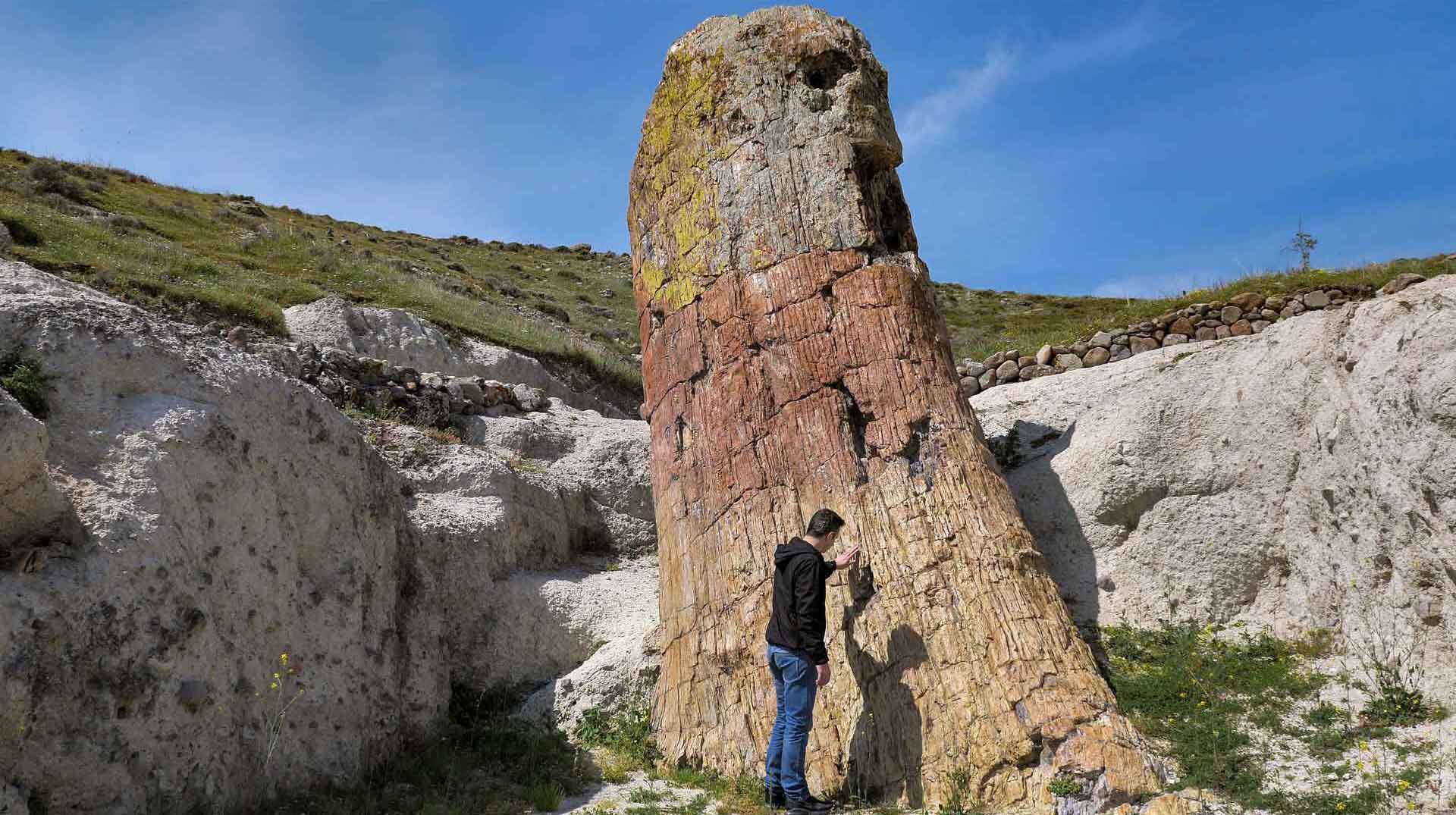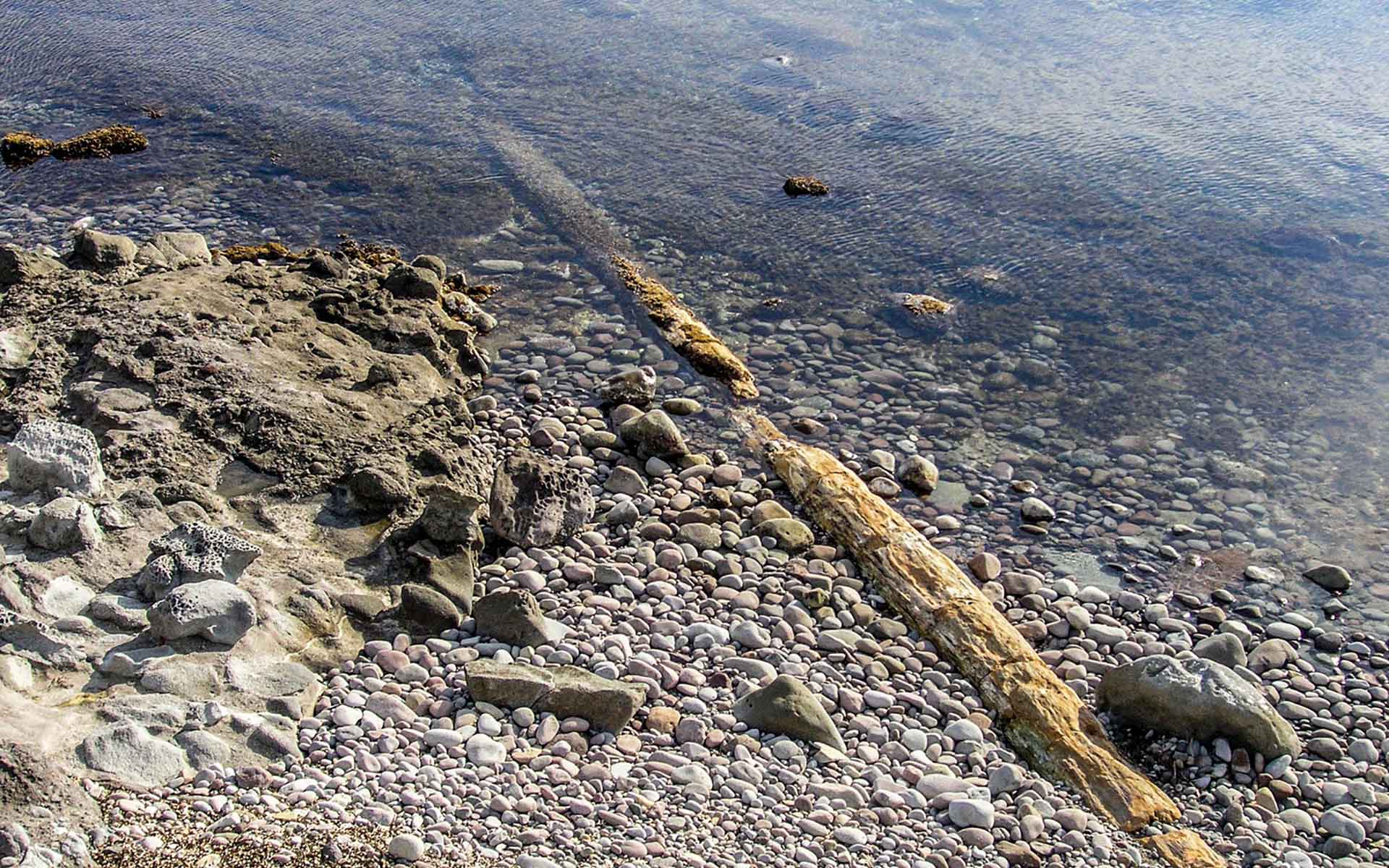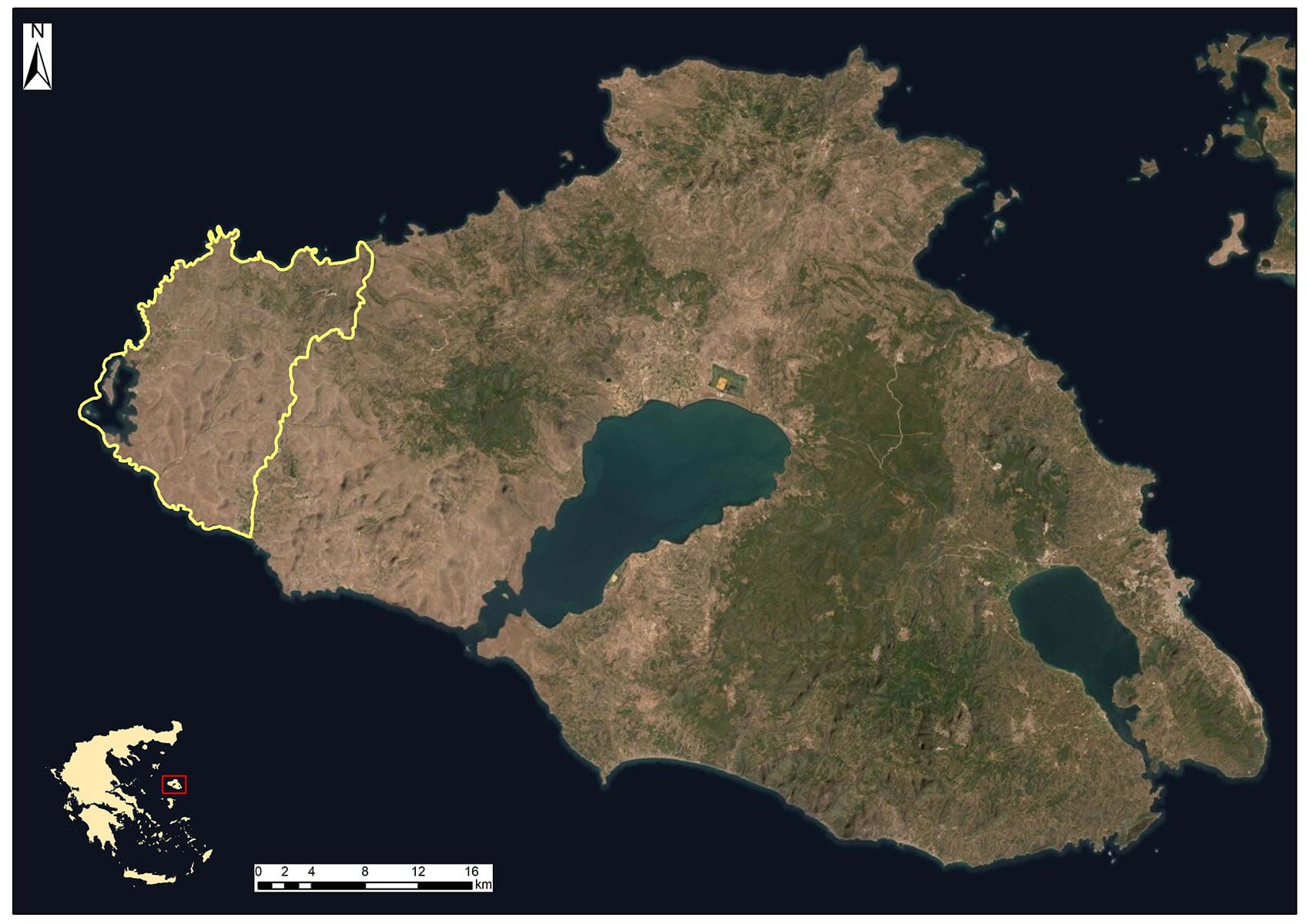
The largest standing trunk of a petrified tree known so far in the world belongs to a conifer tree (Taxodioxylon albertense), an ancestor of the modern sequoias.
Geological Period
Lower Miocene
Main geological interest
Paleontology
Volcanology
History of geosciences
Location
Lesvos Island Geopark, North Aegean Region, Greece.
39°12’32.0″N, 25°53’50.0″E
The largest standing trunk of a petrified tree known so far in the world belongs to a conifer tree (Taxodioxylon albertense), an ancestor of the modern sequoias.
One of most complete Early Miocene forest ecosystem records of the world.
The Lesvos Petrified Forest is one of the best preserved fossil forest sites in the world, well protected and conserved as a Natural Monument. Its creation is linked with the Early Miocene volcanism of the Aegean area. It is a historic site related with the early steps of Earth Sciences because of the first reference to the fossilisation process by the philosopher Theophrastus (371BC-287BC) . It is one of the first four areas recognised as geoparks in Europe in 2000. It is a flag site for geoeducation and raising awareness on geological heritage nationally and internationally.
- Geological description
The Lesvos Petrified Forest is a protected natural monument (Presidential Decree 433/1985). It represents successive subtropical forests fossilized in situ due to the intense volcanic activity during Lower Miocene (21 – 16.5 Ma.).
It covers an area of 15,000 ha with pyroclastic formations both on Lesvos island and the marine area along its western coast. The trees were petrified in their original growing position.
Lesvos is part of a belt of late Oligocene to middle Miocene calc-alcaline to shoshonitic volcanism of the northern and central Aegean Sea and western Anatolia. The fossilized flora of the Lesvos Petrified Forest consists of pteridophytes, conifers, and angiosperms. The conifers are represented by the families of Protopinaceae, Pinaceae, Cupressaceae, Taxodiaceae, Gingoales. Of the monocotyledons, various types of palms have been identified while of the broadleaves (angiosperm-dicotyledona), species of poplar, laurel, cinnamon, plane, oak, lime, beech, alder and maple have been found. The composition of the petrified flora indicates that the Petrified Forest developed in a subtropical climate. This changed suddenly into a continental climate with plants characteristic of the subtropics of Southeast Asia and America.
- Scientific research and tradition
First references to Lesvos fossils were made by Theophrastus (371-287 BC). F. Unger (1844) describe Lesvos fossil trees. Systematic scientific study started in 1978. Scientific research and excavations have been carried out by the Natural History Museum of the Lesvos Petrified Forest since 1997. During the last years rescue excavations revealed thousands of petrified trees and fossil leaves in the area.
The Petrified Forest of Lesvos is one of the four founding members of the European Geoparks Network in 2000 and among the initial members of the Global Geoparks Network in 2004. It is a flag geological heritage site used for decades by schools and universities in earth sciences and environmental education and recently on geohazards and climate change educational activities.
- Reference
Koufos, G.D., Zouros, N. and Mourouzidou, O. (2003) ‘Prodeinotherium bavaricum (Proboscidea, Mammalia) from Lesvos island, Greece; the appearance of deinotheres in the eastern Mediterranean’, Geobios, 36(3), pp. 305–315. Available at: https://doi.org/10.1016/S0016-6995(03)00031-7.
Pe-Piper, G. et al. (2019) ‘Nature of the hydrothermal alteration of the Miocene Sigri Petrified Forest and host pyroclastic rocks, western Lesbos, Greece’, Journal of Volcanology and Geothermal Research, 369, pp. 172–187. Available at: https://doi.org/10.1016/j.jvolgeores.2018.11.018.
Süss, H. and Velitzelos, E. (1997) ‘Fossile Hölzer der Familie Taxodiaceae aus tertiären Schichten des Versteinerten Waldes von Lesbos, Griechenland’, Feddes Repertorium, 108(1–2), pp. 1–30. Available at: https://doi.org/10.1002/fedr.19971080102.
Süss, H. and Velitzelos, E. (2010) ‘Lesbosoxylon gen. nov., eine neue Morphogattung mit dem Typus Lesbosoxylon ventricosuradiatum sp. nova aus dem Tertiär der Insel Lesbos, Griechenland’, Feddes Repertorium, 121(1–2), pp. 18–26. Available at: https://doi.org/10.1002/fedr.201011124.
Velitzelos, E., Petrescu, I. and Symeonidis, N. (1981) ‘Tertiäre Pflanzenreste aus der Ägäis. Die Makroflora der Insel Lesvos (Griechenland)’, Ann. Géol. Pays Hellén, 30, pp. 500–514.
Velitzelos, E. and Zouros, N. (1998) ‘New results on the petrified forest of Lesvos. Bulletin of the Geological Society of Greece’, Bulletin of the Geological Society of Greece, 32(2), pp. 133–142.
- Author(s)
Director of the Natural History Museum of the Lesvos Petrified Forest, Professor in the Department of Geography, University of the Aegean


